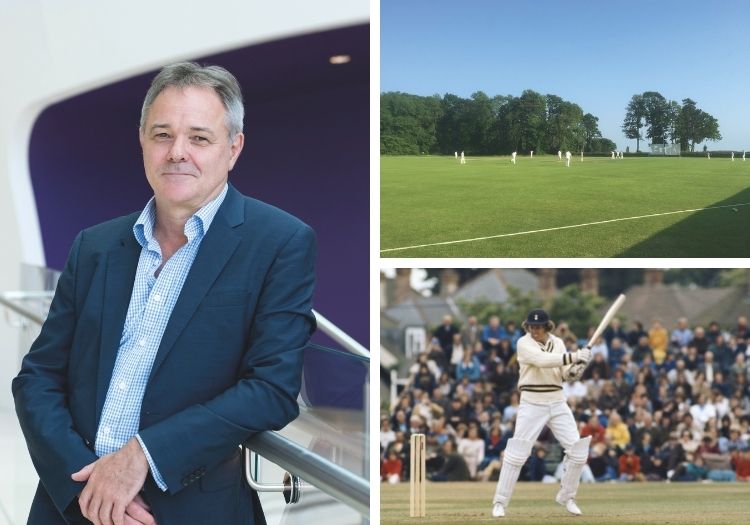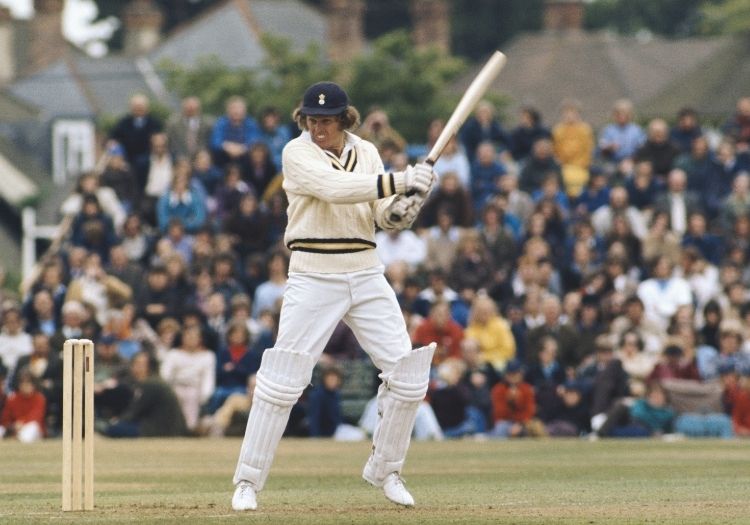
Farrar is among the world's pre-eminent experts on infectious diseases and turns out on Sundays for Steeple Aston CC in north Oxfordshire
Sir Jeremy Farrar is among the world’s pre-eminent experts on infectious diseases. During the Covid-19 pandemic he has advised the UK government as part of the Scientific Advisory Group for Emergencies (Sage), and consulted the ECB over its plans for biosecurity and the recreational game. He is the director of the Wellcome Trust and turns out on Sundays for Steeple Aston CC in north Oxfordshire.
I grew up with cricket. Both my mother and my father were really avid cricketers and cricket supporters. Cricket is intensely individual. It is you as a batsman against that bowler. There is something very intimate about that. There is no escaping. It is your technique, your ability, your mental state against somebody else, in a very gladiatorial way, and all in a theatre on that little square. It is obviously not boxing but I feel it is quite close. At the same time, you are part of a team. In my professional life as well, that sense of your individual contribution – as a batsman, as a doctor – being part of a much larger effort is really important. That combination of individuality and teamwork has always appealed to me.
I think bowlers have a really easy life. They can bowl six balls, five can be useless but they can take a wicket and everyone forgets them. As a batsman you only have one chance and you know it is going to be a really miserable day if you get out for nought.
Cricket came into my life through a combination of my primary school and at home. My father was the headmaster of a primary school which I went to and he was a keen sportsperson – a very good rugby league player and a good cricketer. Being the youngest of six kids, there was a lot of cricket in the garden. But we were not in England for very long and when I was nine or 10 we went to live in Tripoli in Libya. The school there was a small block of flats, of which the top right apartment was where we lived. In the grounds, the garden – which was sand – had mostly been turned into a playground for the school, but my father insisted on a matted strip of hessian being laid out. I can vividly remember a palm tree which was built into a wall, and on that palm tree were painted three stumps. I played there a lot with my father and a couple of friends, for hours. That was really when I first started to play the game properly myself. Almost nobody else in Libya shared my interest.

The beautiful Great & Little Tew CC in Oxfordshire
In the early 1970s I watched a lot of cricket on TV. I was living in Hampshire and Barry Richards was a big favourite. Clive Lloyd was captain of Lancashire during my formative years and captivated me, and when the West Indian team came into their prime I loved watching them. Gordon Greenidge had the most beautiful drive and I would spend hours playing against a wall pretending to be either him or Barry Richards. You cannot underestimate the power of these sporting icons and how young people try to replicate them. I remember watching Greg Chappell on TV, too, and being inspired. I love watching the cover drive, how the best players play the shot and where they put their feet.
I am right-handed but as a cricketing hero it is very hard to beat David Gower. In his prime, he was the most beautiful batsman to watch – languid and in possession of wonderful timing. I am not particularly tall and not particularly strong so timing is everything, and watching Gower’s exquisite timing was incredible. He never seemed to do any more than lean into the ball.
I played extensively at high school, but less so at university. During A Level years I played club cricket in the West of England League for Chippenham. I was selected for the Hampshire schoolboy side as a spin bowler, which I have to say now seems ridiculous. My father’s hero was Ray Illingworth – he was a Yorkshireman – and I tried to base my action and twist of the hips on him.
Because I was playing so much sport in my A Level year, I then had to resit my A Levels. By now my family had moved to Wiltshire so I represented the county. That set-up was very professional. Wiltshire’s schoolboy sport – rugby, cricket and hockey, I was playing all three at county level – was incredibly well organised. They were really plugged in to bigger cities. That helped me make the South West and South of England teams, and we played against the North. I was amazed because us southerners seemed to be about five or six years younger than the group from the north. It was so intimidating. While my voice had hardly broken they were all shaving! It was schoolboys against adults, and the South of England Under-19s was the limit of my progress in cricket.
One of the best parts of cricket is the scenery in which we play the game. There is a beautiful village in Oxfordshire called Great Tew, and it is home to a wonderful pitch (if you are a batsman): really hard, really true and superbly looked after by the groundsman. Four or five years ago, playing there, I scored my first century since the early 2000s. That is up there with some of the best moments of my cricketing ‘career’.

A young Jeremy Farrar grew up watching the great Barry Richards at Hampshire
When I was a medical student, I took an elective module and went with a friend to Papua New Guinea for three months around Christmas 1986. We were in the highlands, in a place called Mount Hagen, which is a really tough area: one night working in the hospital there was a huge fight in the town between two communities and we had 25 or 30 people coming in with bow-and-arrow inflicted injuries; there were people dead in the morgue with spears sticking out of them. I will never forget it. Bizarrely, among all this, I discovered a very active cricket scene. I was brought into a team by someone at the hospital, a family team called a “one tok”, which means “the same language” in pidgin English.
I played in Mount Hagen, Goroka, Port Moresby and Wewak on the coast. These are stunning grounds, and there were really talented cricketers. In those three months I must have played 15 or 16 games of cricket, and playing in Papua New Guinea was probably – alongside that century at Great Tew – my favourite moment. When you play in places like PNG and Singapore – where I was also lucky enough to get a game – it is amazing how the humidity changes the game. The ball does bizarre things.
I did not pick up a bat a great deal through my twenties and thirties, but in 1995 I went to live in Vietnam and surprisingly the country had a really active cricket scene. There are communities in Vietnam from Australia, New Zealand, India, Sri Lanka and Pakistan, and enough people from the UK to make a team. And so there was a league: two Indian teams, two from Sri Lanka and Australia, and a Vietnamese team. The Royal Melbourne Institute of Technology had a campus there and they had a pitch – concrete with matting – and a reasonable outfield, in that it was playable. I do wish I had played more during those years from 1977 until 1995 but professional commitments just did not allow me the time. If you learn well as a child, if you are taught well as a child, you may be rusty and it may take you time but you will never lose that technique.
If you move a lot as a kid, and as an adult, there are only so many things which can gain you access to that community. Often it is because your children are at the same school but cricket has a real universality about it, wherever it is played. There is a certain grace to it, there is a certain culture to it which is slightly bizarre but people welcome you. Especially if you are reasonably good! If you can hold a bat the right way up it does not matter whether you are in Papua New Guinea, north Oxfordshire or Saigon. It is an entry road into a social life as well as playing a fantastic sport.
Interview by Sam Morshead
This article was published in the June edition of The Cricketer - the home of the best cricket analysis and commentary, covering the international, county, women's and amateur game